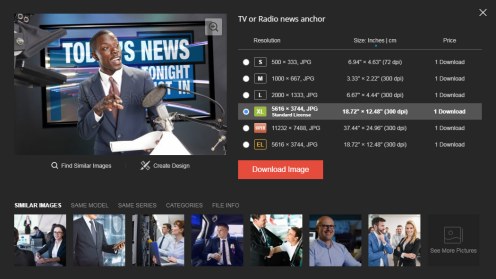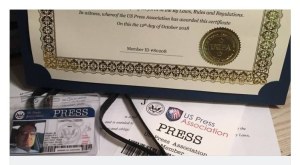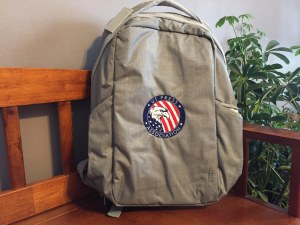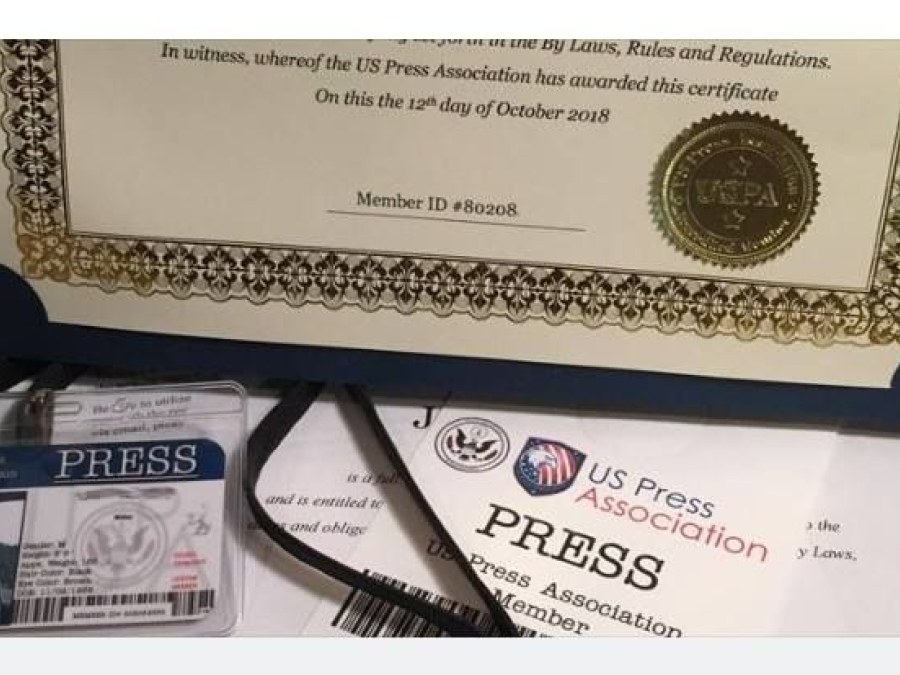
Welcome to the US Press Association! We're excited to have you here today. Are you interested in learning more about the benefits of becoming a member of our organization?
Our membership options are designed to fit the needs of every journalist, photographer, and media professional. As a member, you'll have access to exclusive resources, networking opportunities, and professional development programs that will help you grow your career.
We offer a variety of resources, including access to our extensive media database, press release and distribution services.
We have a thriving community of media professionals, and our members have the opportunity to connect with other journalists, photographers, and media professionals through events and online forums. This is a great way to expand your professional network and build relationships with others in the industry.
Joining is easy! Simply explore membership options HERE to see which membership packet is right for you or your organization. Once you've selected the membership level that's right for you, just follow the steps to complete your registration.
Thank you for considering membership in the US Press Association. We look forward to welcoming you to our community of media professionals!
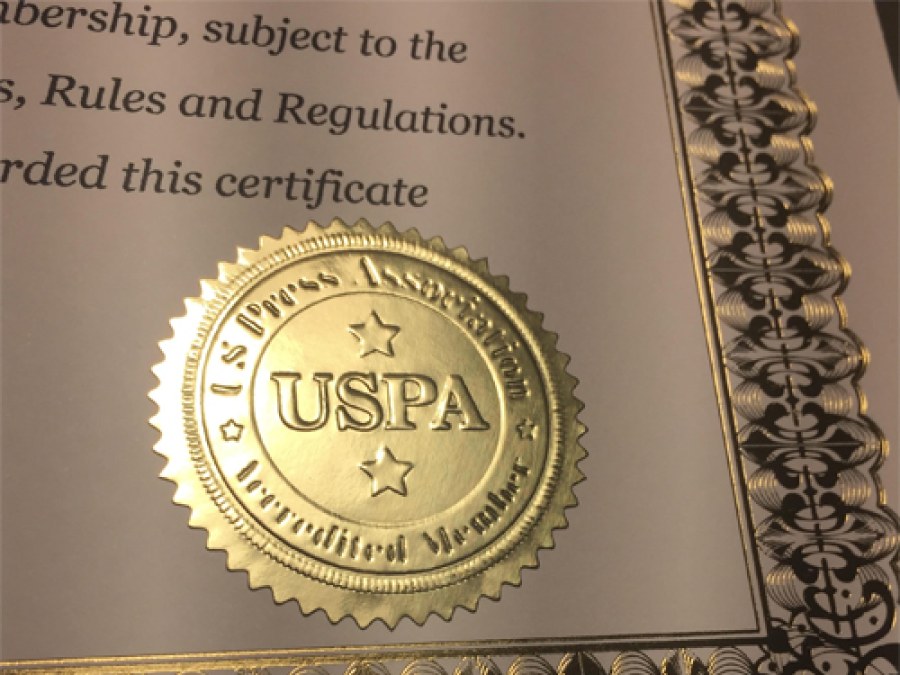
There are many different press passes out there, but the US Press Association press pass is the one you need to have in your hand. These credentials have helped members access a plethora of venues and events over two decades. If you're looking for something exciting and new to report on, the USPA could be just what you're looking for!
What makes the USPA different from other organizations granting press passes? For one thing it has over 20 years of experience providing professional journalists with opportunities.
Think about the last time you watched a press conference on TV or even read a journalists eyewitness account or concert review in a newspaper or magazine. There is a good chance it was covered by an individual who had been given a US Press Association (USPA) press pass. The USPA is an organization that issues journalists, bloggers, writers, videographers and others, credentials which help them access events such as debates, hearings, concerts, award ceremonies, sporting events, fashion shows, trade shows and much more. If you are interested in getting your work out there but aren't sure how, then consider registering for a USPA press pass today!
Do you want to get more press coverage for your blog? Would you like to have an increased presence in the media world? If so, then it's time to get your US Press Association press pass. This is the perfect way for bloggers and writers alike to gain access to some of the hottest events happening today. With just a short application process, you're on your way towards success.
Do you want to find a way to earn income from your blog? The US Press Association press pass is the perfect solution. A US Press Association press pass can help you earn and have an amazing time doing what you love most.
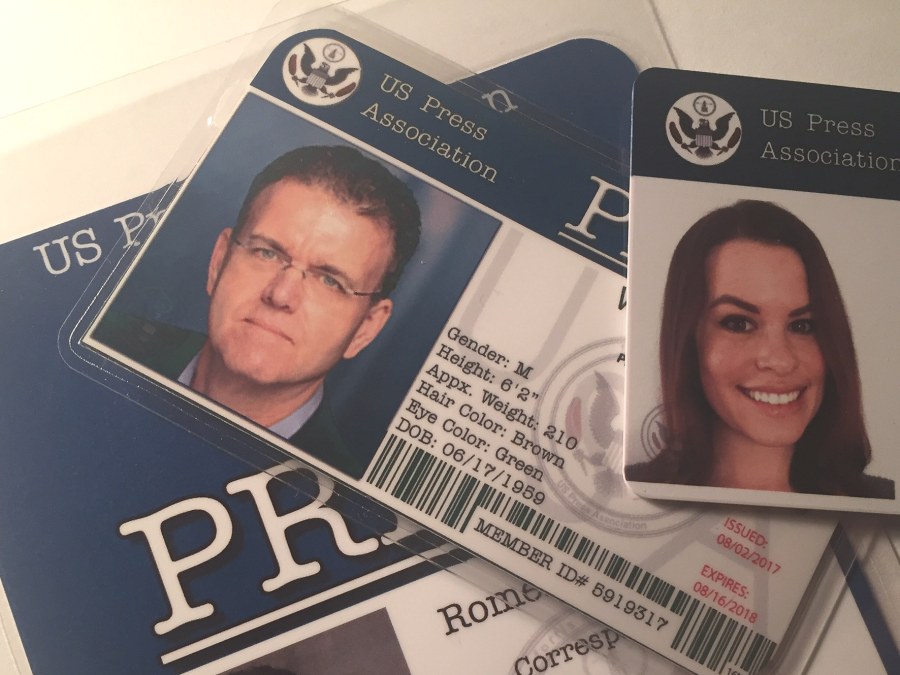
Can I make my own press pass? Can I make my own press badge? We actually get these questions quite a bit from either prospective members or others that are simply curious about being able to cover an event they may be interested in.
It's really not a difficult question to answer or to understand.
While you may have the chops to create a really good looking press badge of sorts, the question is "what good will it really do"? Your press ID, press badge, press pass itself is not really what is going to get you considered for things like being able to photograph a concert or event. The question those decision makers are primarily concerned with is, "what website or publication are you part of" and "what are the number of daily/monthly listeners, viewers or readers"? If you have some slick looking press badge that you've created but no outlet or an outlet with 400 monthly visitors, chances are you're not going to be considered or receive a media pass for that particular venue or event, as they are looking for a larger audience. Of course, if it is a relatively small or local gathering, there could be other considerations.
When it comes to the type of press pass that will be given to you if you are accepted, that would be a design that is unique to either the venue, event or management. And the answer to whether or not you can make one of those is "NO". That is forgery and it is illegal. It would be blatant misrepresentation and unauthorized use of any trademarked or copyrighted names, art, symbols or material. Keep in mind too, that there is also a significant difference between the credentials that are issued to photographers, writers, bloggers and other types of "all access" passes (backstage passes) etc. Attempting to forge one of those could land you in some serious trouble as well.
So to sum it up, sure you can create your own badge of sorts but you do not want to misrepresent yourself, anyone or anything else.
If you have a (website, internet radio station, publication), use that name on your homemade badge.
Under no circumstances should you use the name, logo, symbol, artwork or anything else that does not belong to you.
When it comes to the primary consideration of most decision makers "the number of visitors, listeners or viewers you have", see how the US Press Association can help you satisfy most requirements.
The US Press Association can also customize business ID’s, press passes, press badges, event credentials, venue credentials, backstage passes, VIP passes for your business or event. Let us put two decades of experience making, issuing and tracking credentials to work for you.

Stock photo reporter image(s) courtesy of depositphotos.com
The only official USPA - US Press Association websites are https://uspressassociation.org and https://uspressassociation.com
The US Press Association was started in an effort to leverage rights, privileges and accessibility of freelancers with that of the more well know networks and main stream media outlets.
The concept of having strength in numbers was the underlying theme and vision for the organization. The Freelance Press Association was started that same year, but has since merged with the US Press Association. Some of the earliest members of the US Press Association were able to access and report from venues, events and scenes of breaking news that were once commonly restricted for freelance journalist.
Recognizing the importance that "NEW MEDIA" was going to have on the world we live in, the US Press Association had and still has the vision that freelance journalists of all types need an outlet for their stories "YOUR STORIES", and an organization that will be there to help and support them every step of the way.
Members are free to submit stories, photos, video and other forms of media for website submission. Having the member ID, 24/7 online and phone confirmation of membership along with having a profile listed in the USPA database help to increase odds of maximizing the impact of the news event members want to cover by being granted certain privileges.
This ID clearly identifies you as a member of our organization and your profile information is able to be verified in our domestic or international database of members.
Beware of the deception of other sites calling themselves USPA!
We are THE USPA
Don't subject you or your computer to the risk of some of these websites. Many of these illegitimate sites are full or malware, spyware and trojan horses that can severely damage your computer, compromise your online safety and contribute to identity theft. Worst of all they prey on the aspirations of both freelancers and professionals alike with their slickly produced websites and webs of fake agencies and publications. We urge you not to be deceived by some of the offers that are out there. In this day and age it is easy to fall for misinformation and scams that are available on slickly produced websites. Try to contact or call these websites, if you can find a number.
One way to help distinguish these fake sites is their use of stock photography throughout the site.
One site uses an image of a so called "reporter" standing just steps away from Air Force One to give the impression that one of their so called "reporters" was able to obtain this level of access.
The use of stock photos on these sites is plentiful and examples of where the images come from can be found at websites like: SHUTTERSTOCK - 123RF - iStockPhoto & Getty Images just to name a few.
Do your research! Track where YOUR MONEY is going!
You may be surprised to find where your money will be headed, and maybe more surprised to discover it's not even in the United States. If you choose to obtain one of the many so called "Press Passes" that are being sold simply to attempt gaining backstage access to a concert, or attempt to interview a celebrity let us offer you a better solution, "Join the US Press Association".
Unlike fake websites and bogus agencies, we WILL make every effort to help you in a genuine pursuit to cover a great story or event. We offer the support you need, and answer any questions you may have.
Become part of a legitimate movement, a legitimate organization.
We are a member and volunteer based organization and we are passionate about news and media, and we want to help YOU in any way we can.
IF YOU ARE A PROSPECTIVE MEMBER OR SEEKING INFORMATION, FEEL FREE TO CALL OUR TOLL FREE NUMBER OR USE OUR LIVE ONLINE CHAT SUPPORT.

An RFID-encoded membership card from the US Press Association offers unparalleled convenience for press members. At concerts, venues, and security desks, simply tap your card to instantly share your credentials and contact information, eliminating the need for manual verification and reducing wait times. This seamless, high-tech solution ensures quick access and professional recognition, making it easier for you to focus on covering the event without interruptions. Enjoy the efficiency and ease of an RFID-encoded membership card, designed to support your work as a dedicated press member.
Check The New Cards Out Here

Exciting News! Advertising is Coming Back to the US Press Association Website!
We are thrilled to announce that advertising is returning to the US Press Association website! For decades, our site has been a cornerstone for journalists, media professionals, and content creators worldwide. With a rich history and a reputation for excellence, the US Press Association website boasts a high daily visitor count and a highly engaged, niche audience of members and visitors.
Whether you're looking to reach independent writers, bloggers, photographers, or media enthusiasts, our platform offers unparalleled exposure and engagement. Stay tuned for more details on how you can leverage this opportunity to connect with our dynamic and diverse community!
Join us in this exciting new chapter and amplify your brand's reach with the US Press Association.
CHECK OUT ADVERTISING RATES
#USPressAssociation #Advertising #Media #Journalism #ContentCreators #Engagement #MarketingOpportunity #HighTrafficWebsite #JoinUs

Date: August 14, 2023
Cricket South Africa (CSA) has unveiled the squads that will lock horns with Australia in a highly-anticipated white-ball series, with a notable addition capturing the spotlight. Momentum Multiply Titans' rising star, Dewald Brevis, has received his maiden call-up to both the T20 International (T20I) and One-Day International (ODI) squads, showcasing his prowess as a dynamic batter and marking a new chapter in his cricket journey.
At just 20 years old, Brevis made a significant mark on the global stage by emerging as the top run-scorer in the ICC U19 Men's Cricket World Cup back in January 2022, accumulating a staggering 506 runs in the tournament, the highest by any batter in a single edition. Since then, he has been making waves in T20 leagues across the world, claiming the record for the highest individual domestic T20 score in South Africa, a blazing 162 off 57 balls during the CSA T20 Challenge last season. His recent standout performance in the SA 'A' tour to Sri Lanka further solidified his reputation, with a brilliant 71-ball 98 in the first unofficial 50-over match.
Joining Brevis in the T20I squad for their first taste of international action are his Titans comrades Donovan Ferreira and Gerald Coetzee, the latter having the opportunity to add to his Test and ODI caps if chosen. Donovan is a rags to riches story. A few years ago he was working full time and had no contract. Given a chance by the Titans, Donovan secured a lucrative contract with Joburg Super Kings in the SA 20 tournament. Dafabets Warriors' batter, Matthew Breetzke, completes the fresh additions to the squad, as the selectors emphasize nurturing new talents and expanding the pool of potential stars.
Keshav Maharaj, the experienced spinner, returns to the squad for the second and third T20Is, as well as the ODI series, continuing his determined comeback from a ruptured left Achilles tendon suffered during the Betway Test series against West Indies earlier this year.
Several seasoned players, including Quinton de Kock, Heinrich Klaasen, David Miller, Anrich Nortje, and Kagiso Rabada, are taking a well-deserved rest during the three-match KFC T20I series, gearing up to rejoin the team for the five-match Betway ODI series, a crucial stepping stone ahead of the World Cup.
The anticipation for the 15-player World Cup squad, set to be announced on September 5, is building, and this white-ball series provides a golden opportunity for emerging talents to make their mark. White-ball head coach Rob Walter expressed the team's eagerness to expand their player base and praised the selected players' consistent domestic performances, while also welcoming back Keshav Maharaj, whose recovery progress has been commendable.
Cricket fans across South Africa can look forward to an exciting series against Australia, where the Proteas will face a formidable opponent in what promises to be a high-intensity contest. As the tour dates approach, the cricketing community eagerly awaits the on-field action, as these encounters will serve as vital preparation for the looming World Cup, with Director of Cricket Enoch Nkwe confident in the team's determination and readiness to take on one of the world's best cricketing sides.
The complete T20I and ODI squads have been finalized as follows:
Proteas T20I Squad against Australia:
Aiden Markram (captain, Momentum Multiply Titans)
Temba Bavuma (DP World Lions)
Matthew Breetzke (Dafabet Warriors)
Dewald Brevis (Momentum Multiply Titans)
Gerald Coetzee (Momentum Multiply Titans)
Donovan Ferreira (Momentum Multiply Titans)
Bjorn Fortuin (DP World Lions)
Reeza Hendricks (DP World Lions)
Marco Jansen (Dafabet Warriors)
Sisanda Magala (DP World Lions)
Keshav Maharaj (Hollywoodbets Dolphins)
Lungi Ngidi (Momentum Multiply Titans)
Tabraiz Shamsi (Momentum Multiply Titans)
Tristan Stubbs (Dafabet Warriors)
Lizaad Williams (Momentum Multiply Titans)
Rassie van der Dussen (DP World Lions).
Proteas ODI Squad against Australia:
Temba Bavuma (captain, DP World Lions)
Dewald Brevis (Momentum Multiply Titans)
Gerald Coetzee (Momentum Multiply Titans)
Quinton de Kock (Momentum Multiply Titans)
Bjorn Fortuin (DP World Lions)
Reeza Hendricks (DP World Lions)
Marco Jansen (Dafabet Warriors)
Heinrich Klaasen (Momentum Multiply Titans)
Sisanda Magala (DP World Lions)
Keshav Maharaj (Hollywoodbets Dolphins)
Aiden Markram (Momentum Multiply Titans)
David Miller (Hollywoodbets Dolphins)
Lungi Ngidi (Momentum Multiply Titans)
Anrich Nortje (Dafabet Warriors)
Tabraiz Shamsi (Momentum Multiply Titans)
Wayne Parnell (Six Gun Grill Western Province)
Kagiso Rabada (DP World Lions)
Tristan Stubbs (Dafabet Warriors)
Rassie van der Dussen (DP World Lions).
Here's the tour itinerary:
KFC T20I Series:
Wednesday, August 30 - 18:00
South Africa vs Australia - Hollywoodbets Kingsmead Stadium, Durban
Friday, September 1 - 18:00
South Africa vs Australia - Hollywoodbets Kingsmead Stadium, Durban
Sunday, September 3 - 14:00
South Africa vs Australia - Hollywoodbets Kingsmead Stadium, Durban
Betway ODI Series:
Thursday, September 7 - 13:00
South Africa vs Australia - Mangaung Oval, Bloemfontein
Saturday, September 9 - 13:00
South Africa vs Australia - Mangaung Oval, Bloemfontein
Tuesday, September 12 - 13:00
South Africa vs Australia - JB Marks Oval, Potchefstroom
Friday, September 15 - 13:00
South Africa vs Australia - SuperSport Park, Centurion
Sunday, September 17 - 10:00
South Africa vs Australia - DP World Wanderers Stadium, Johannesburg.
[Submitted by Kevin Rademeyer]
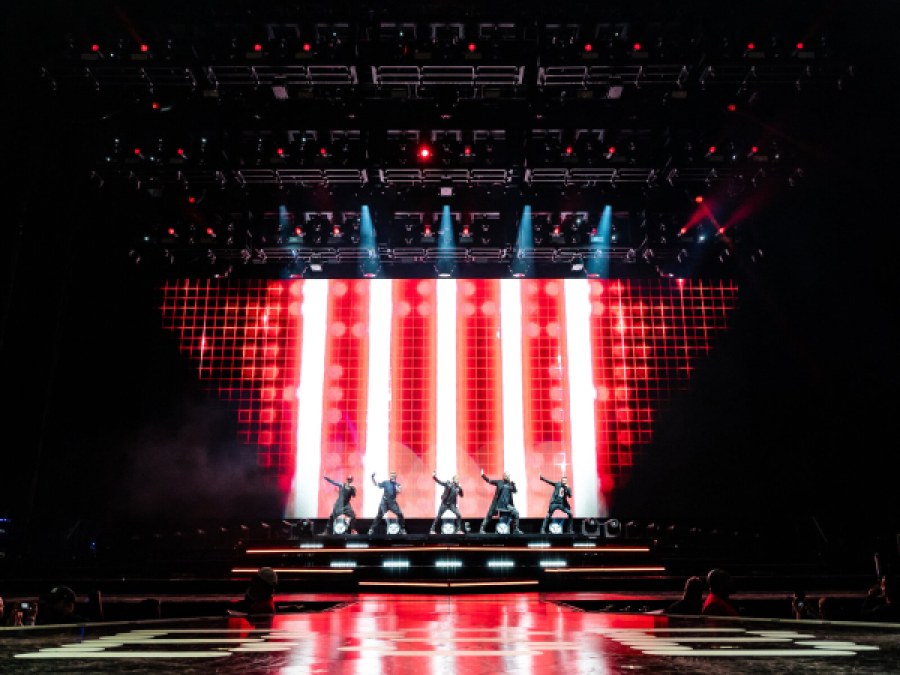
The weekends Backstreet Boys concert at Sunbet Arena in Pretoria proved to be a captivating journey into the past, delighting a jam-packed crowd with an electrifying display of talent and showmanship.
As we assess this highly anticipated performance, let's delve into the highlights that made it an unforgettable night for fans. The tour started in 2019, was postponed due to covid and ended on South Africa shores. The tour included 218 shows, performed in 44 countries and over 6 continents. It was their biggest tour to date.
Originality was on full display as the Backstreet Boys took the stage, focusing on their own material and steering clear of cover songs. The group's commitment to their latest album, "DNA," was evident as they flawlessly incorporated a substantial amount of new material into their setlist. This dedication to evolving their sound while staying true to their roots showcased their ongoing creativity and ensured a fresh and exciting experience for concertgoers.
Catering to the audience's every need, the Backstreet Boys delivered a comprehensive concert experience. They seamlessly weaved new material with crowd-pleasing dance moves and moments of nostalgic bliss, ensuring that fans of all generations were thoroughly entertained. The concerts were a remarkable journey back in time, igniting a wave of nostalgia while showcasing the bands growth and musical prowess. With an impeccable blend of new and old favorites, the Backstreet Boys proved their enduring popularity and reaffirmed their status as one of the most beloved boy bands in history. The performances were a testament to their enduring appeal and their ability to transport audiences to a place of pure musical euphoria. It was also a testament to their 30 years spent together.
The sensational boy band that dominated the music scene in the early 2000s, proved they still have what it takes to captivate audiences during their concerts. Despite the passage of time slightly affecting their dance moves and vocal prowess, the group's electrifying performance over the weekend showcased their enduring ability to rock fans' bodies and reignite nostalgic memories.
The concert kicked off with an energetic rendition of "Everyone" from the band's 2000 album "Black & Blue." While the dance moves may not have matched their prime, the quintet, now comfortably in their 40s and 50s, impressed with their commitment and dedication to the choreography. Standout performances came from AJ McLean and Nick Carter, who showcased their smooth moves, undoubtedly influenced by their participation in "Dancing with the Stars." Kevin Richardson also commanded attention with his weighty gravitas on stage.
Even with the passage of time, the Backstreet Boys' ability to entertain and engage the crowd remained intact. While their dance routines may no longer appear effortless, their two-hour performance showcased their enduring talent and dedication to their craft. This tour, which could have easily been dismissed as a nostalgia cash-grab, exuded genuine heart and effort, ensuring a memorable experience for fans.
Accompanied by generic yet visually pleasing screensaver-like visuals, the band seamlessly navigated through their first act set. Though the iconic hits from their golden era were not immediately performed, the crowd's energy and decibel-shattering screams remained high as they enthusiastically embraced the deeper cuts. The constant dancing and choreography maintained the audience's engagement throughout, and while the newer songs may not have been crowd-pleasers, they still delivered fun and lively performances.
The strategic placement of the "DNA" moments, which were often the fastest songs, ensured that the show didn't become overwhelmed with new material. During songs like "Nobody Else," "Chateau," and "The Way It Was," the band cleverly trimmed down the tunes, allowing one member to shine on stage while engaging in friendly banter with the crowd. This tactic also served as a disguise for the numerous costume changes that took place throughout the night.
Midway through the show, the band ventured into a segment dedicated to their beloved ballads. The power ballad "Show Me the Meaning of Being Lonely" was a standout moment, eliciting a roaring response from the audience. Despite their transition into fatherhood and a more mature phase of life, the Backstreet Boys still exude a youthful exuberance and camaraderie on stage. The banter, dad jokes, and playful interactions between songs only added to the night's charm.
The middle section had the crowd roaring with delight. “Show Me the Meaning of Being Lonely” is a banger of a ballad, encouraging massive sing-alongs along with “Shape of My Heart,” “Quit Playing Games (With My Heart)” and “As Long As You Love Me.” Near the end of the segment, BSB gave the band a break and did a lovely harmonious a cappella rendition of “Breathe” that showed off their vocal chops while “I’ll Never Break Your Heart” radiated old-school Motown ballad inspirations, complete with the little synchronized moves at their individual mic stands.
And for those people, they wouldn’t have to wait much longer for the smash hits either as Backstreet Boys wrapped up the set with a barrage of classics – starting with “Everybody (Backstreet’s Back),” somehow made even catchier with a bonus crunchy EDM beat added to the mix. I still think it should be illegal to not open with the swaggery hit – but the wait was well worth it, especially as more high-energy pop favorites (“We’ve Got It Goin’ On,” “That’s The Way I Like It,” “Get Another Boyfriend,” “The One”) quickly followed. The run ended with the triumphant boy band staple “I Want It That Way”.
After a brief break, Backstreet Boys came out for a few final songs and one final costume change – unfortunately not into their robot suits from the iconic “Larger Than Life” music video. Thankfully, after the first encore of the new stompy electronic smash “Don’t Go Breaking My Heart,” the song itself did make its expected appearance – complete with AJ’s incredible sinister cackle at the open and, perhaps the biggest shocker of the night, a bit of a Justin Timberlake beat coming through in the background. If NSYNC and BSB can (tangentially) unite, maybe there can be world peace in our time after all.
They promised to be back on the shores if we wanted them back. The Backstreet Boys can be back anytime they please.
[Submitted by Kevin Rademeyer]
As a journalist or media professional, having a press pass can be incredibly valuable. Not only does it provide you with access to events and information that the general public may not have, but it can also help you gain credibility and build relationships with sources.
If you're interested in obtaining a press pass, there are several steps you can take. The first is to determine what type of press pass you need. Different events and organizations may have specific requirements, so it's important to do your research ahead of time. As a member of the US Press Association, we can take care of this step for you.
Once you know what is needed, you can start gathering the necessary materials. This may include a letter of assignment from your employer or a professional organization, as well as identification. Again, as a member we can help with these requirements.
As a member of the US Press Association, you'll have access to a variety of resources, including a media database, press release distribution services, and networking opportunities. You'll also be eligible for credentials, which can provide you with access to events and information that the general public may not have.
In conclusion, obtaining a press pass can be a valuable asset for journalists and media professionals. By doing your research, gathering the necessary materials, and reaching out to professional organizations like the US Press Association, you can increase your chances of obtaining a press pass and gaining access to valuable information, venues and events.
You can explore membership options and packets HERE


